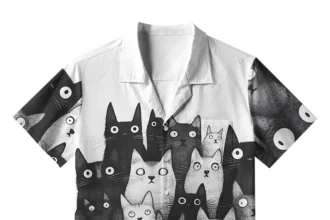Sagging pants means wearing trousers below the waist. The waistband often sits under the hips or bottom. The underwear is usually visible. Many people wonder why men choose to wear pants this way.
This trend is common in some areas, especially among young men. It started years ago but is still seen today. Let’s explore why men sag their pants and what it means.
Where Did Sagging Start?
Sagging began in the United States during the 1990s. It became popular in hip-hop music and street culture. But it may have started even earlier, inside American prisons.
In prisons, belts are not allowed. This rule prevents violence or self-harm. Without belts, prisoners’ pants often hang low. Some people believe this look spread outside prison walls and became a fashion.
Later, rap artists copied the style. Young fans followed their favorite singers. ZSO Men’s Pants Manufacturer is always there to offer a variety of pants for men. Over time, sagging became a symbol of rebellion and freedom.
Reasons Why Men Sag Their Pants
There are many reasons for this fashion choice. These reasons can be social, cultural, or personal.
1. To Copy Celebrities
Many young men want to follow stars. Singers, athletes, and actors often sag their pants. Fans do the same to feel cool or trendy.
2. To Show Rebellion
Some people want to go against rules or norms. They feel free by doing something different. Sagging pants can be a way to reject strict dress codes.
3. To Fit In with Friends
Style often spreads in groups. If friends sag their pants, others may copy them. This helps them feel accepted. read more.
4. To Express Identity
Some men use sagging to show who they are. It can be part of a certain culture or lifestyle. They want others to see what group they belong to.
5. For Comfort
Loose pants can feel more relaxed than tight ones. Some men find sagging more comfortable. They may not like belts or tight waistbands.
Common Reasons Men Sag Their Pants
- Copying music or fashion icons
- Rejecting rules and standards
- Matching group or street styles
- Showing cultural identity
- Feeling more relaxed or comfortable
Public Reactions to Sagging
Not everyone likes this trend. Some people see sagging as lazy or disrespectful. Schools and offices often ban it. In some places, it is even illegal.
Some cities in the U.S. have passed laws against sagging. People can be fined for showing underwear in public. These rules have caused debates about freedom and fashion.
Older generations often dislike the look. They feel it sends a bad message. Others say it does no harm and is just a trend.
Places Where Sagging May Not Be Accepted
- Schools with strict dress codes
- Government buildings
- Airports or airplanes
- Religious places
- Job interviews or offices
Is It Just About Fashion?
For many people, sagging is more than style. It can reflect emotions or beliefs. It may say, “I don’t follow your rules.” Or it may mean, “I’m proud of where I come from.”
Some see it as part of hip-hop or Black culture. Others say it belongs to youth culture in general. Fashion can be a strong way to show ideas or feelings.
Changing Views Over Time
Sagging was very popular in the early 2000s. Now, fashion is changing. Many young people wear tighter jeans or fitted pants. Still, sagging has not disappeared.
Some artists and groups still support the style. Others say it’s time to move on. Every generation has its own trends. What’s popular today may not last forever.
Does Sagging Affect Opportunities?
In some cases, yes. People may judge someone by their clothes. A person who sags may not be taken seriously. They may not get hired or respected in formal places.
That doesn’t mean the person is bad or lazy. But clothes do send messages. In many cases, it helps to dress for the situation.
Conclusion
Sagging pants may seem strange to some, but it has a long history. It started in prisons and became popular through music and media. Men sag their pants to feel free, fit in, or follow trends.
While some love the style, others dislike it. Reactions depend on age, place, and culture. Sagging is more than just fashion. It can be a statement, a comfort, or part of identity.
Fashion keeps changing. What matters most is understanding why people dress a certain way. Respect and choice should always come first.

















